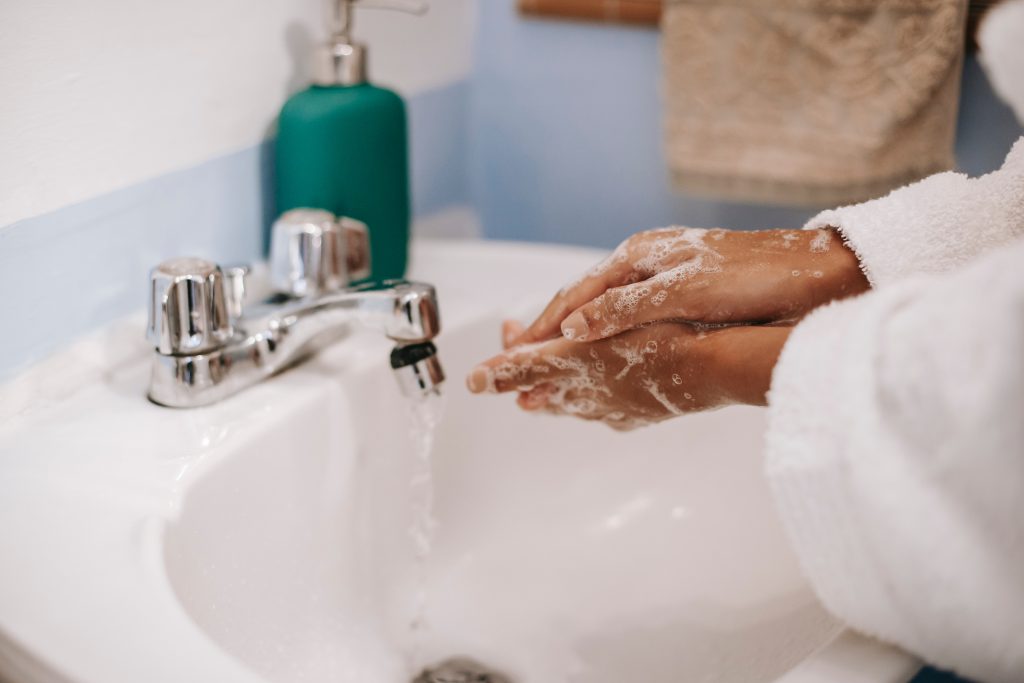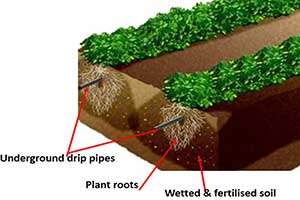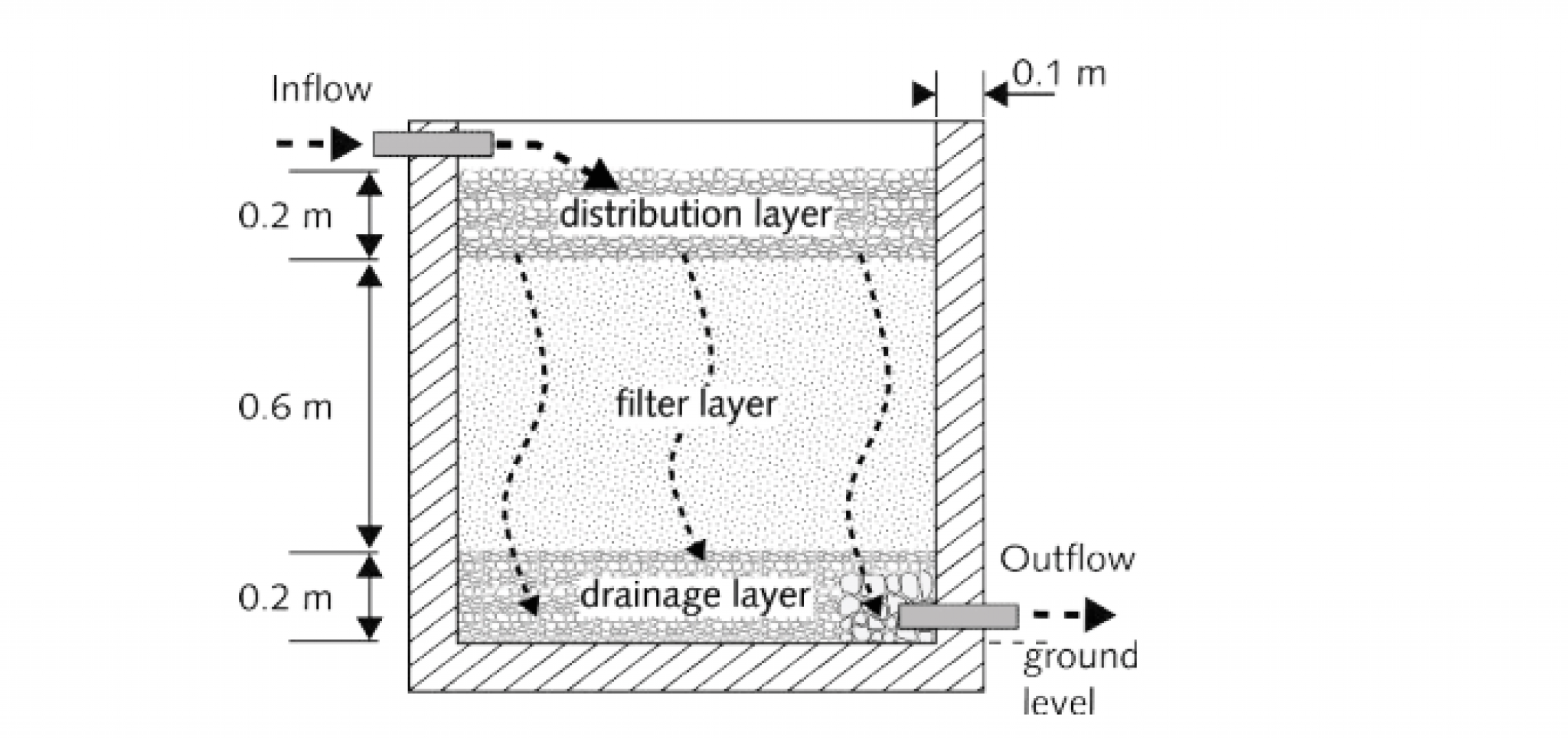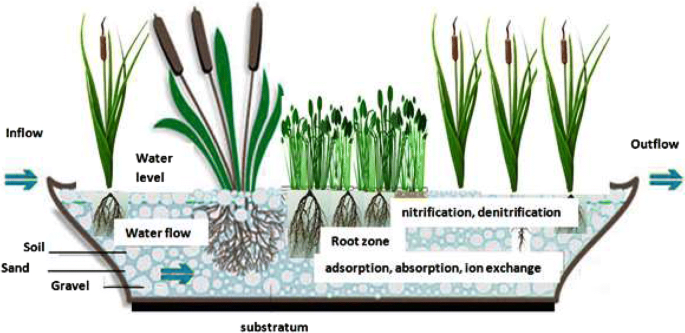You may have heard of greywater and how it can save you both water and money, but what exactly is in greywater?
Greywater is used water from your household. Household activities such as dishwashing, showering, bathing, and laundry use clean water and create greywater. Basically, all water except the wastewater from your toilet is greywater.
As we work towards a more sustainable future, we have become more innovative and aware of our resources. For example, recycling greywater is a growing concept, with more and more homes using a greywater system to recycle their water.
Table of Contents
What is in Greywater?
Well, since it’s used water straight from your taps, we should look at what’s in the water supply.
Purification centers use various chemicals to process water before entering our water supply. These chemicals kill bacteria, algae, and other parasites. The chemicals also prevent foam from forming and allow their purification systems to operate efficiently, providing cleaner water.
Tap water contains the following chemicals:
- Chlorine
- hydrogen Chloride
- Natrium Hydroxide
- Copper & Iron
- Oils & Silica
- Nitrates
- Ammonia
- Flouride
These chemicals come in small amounts – they aren’t harmful to humans. However, since these chemicals are used to target/eliminate the growth of organic organisms, they could potentially be detrimental to natural environments.
When we look at greywater, we see all the above chemicals with whatever products we use in our homes. So, for example, greywater from the average household would contain washing detergents, surface cleaners, hair products, skin care products, and beauty products.
A study showed that 90% of greywater is soap. Thus, when we plan on using greywater, we need to be careful of the detergents and cleaning products we use.
Many detergents change the pH level of the water or contain volatile organic compounds. These could make greywater harmful to your plants and the environment around you.

Is Greywater Harmful To Humans?
When it comes to greywater and human safety, it’s not the greywater that is a concern. Instead, it’s the bacteria, viruses, and tiny organisms in it that can be harmful to us. Collectively, these are referred to as pathogens.
These pathogens can come into contact with us when we wash our hands or clean cuts, potentially causing us to become ill.
Therefore we must keep the greywater in a closed system and not handle the water. Washing your hands after working with greywater or a greywater system is also advised.
The World Health Organization (WHO) has released multiple studies and guides when dealing with greywater and using it in agriculture.
Is Greywater Safe For Your Plants?
Whilst the pathogens in greywater may be harmful to humans it’s safe to use on your plants and gardens.
As long as you don’t use detergents that contain volatile compounds, almost all plants can drink greywater. However, how we water them is crucial. For example, decor plants can be watered with hoses and sprinklers, whereas grass can be watered with sub-surface irrigation.
Greywater And It’s Affect On The Environment
Certain factors influence how the soil absorbs greywater and what it leaves behind. We need to understand two factors before we explore this further. These are – Biochemical Oxygen Demand and Chemical Oxygen Demand.
Biochemical Oxygen Demand (BOD5)
BOD5 is the amount of oxygen required for the bacteria and other micro-organisms to break down organic matter. Without a sufficient supply of oxygen, the organic mass in the greywater won’t decompose properly.
Chemical Oxygen Demand (COD)
COD measures how much oxygen needs to be present for there to be bacterial activity inside the greywater. Whilst BOD5 is a natural test, COD uses chemicals to determine the oxygen demand.
The Relationship Between BOD5 And COD
As this study explains, the ratio of BOD5 to COD determines how well the greywater will decompose. On average, the ratios range between 0.3 and 0.71. These figures indicate that just under half of greywater is entirely biodegradable.
When we use heavy cleaning detergents, it causes the ratio to change. When the COD is much higher than the BOD5, there is insufficient oxygen in the water for bacterial activity.
Greywater And It’s Affect On Your Plants
Now that we understand how detergents change how greywater decomposes, we can look at how the greywater affects your plants.
While too many chemicals can be harmful to your garden, certain chemicals help the plants in different ways. Chemicals that aid in the plant’s development are considered fertilizers.
The 3 main chemicals that act as fertilizer are:
- Phospherous
- Nitrogen
- Potassium
All three help plants in different ways. For example, Phosphorous promotes root growth, while Nitrogen aids in food processing and chlorophyll development.
These three chemicals can be found in various cleaning products or through food waste. These chemicals also tend to end up down the drain and thus in greywater. So they fertilize our gardens without us even knowing.
| CHEMICAL | PRODUCTS |
| Phosphorous | General Purpose Cleaners, Floor Cleaners |
| Nitrogen | Cooked Vegetable Water, Coffee Grounds |
| Potassium | Lotions, Hairsprays, Denture Cleaners |
There is also a flip side to this. While the chemicals mentioned above help provide the plants with nutrients, they can also change the soil’s pH level.
For plants and crops to grow, the soil should maintain a pH level between 6.0 and 7.0. Acidic products like bleach or hand soap would bring the pH above this level. This alkalinity level would counteract the chemicals that fertilize the plant, harming them instead.
Can I Use Greywater For My Vegetable Garden?
Yes, but don’t water your garden with sprinklers or a hose.
The best way to water your vegetable garden is through underground irrigation. The plant roots will process the water and ensure that the chemicals don’t affect the vegetables or fruit. Greywater is recommended for fruit trees as these trees often have a high water demand. In addition, because the water is recycled, you can water your plants guilt-free.
The only thing to watch out for is watering your vegetable garden with a hose. The last thing you want is the greywater to get onto your vegetables, carrying pathogens with them.
If you’re interested in installing smart irrigation systems for your vegetable garden, we have an article that explains all you’ll need to know!
NPOs and governments use greywater to battle food scarcity in countries with severe water restrictions or drought. In addition, greywater is used for agriculture with no effect on the crops or produce.

Source: wplawinc
What Harmful Contaminants Are In Greywater?
As mentioned above, the main concern with greywater is pathogens. These can enter the greywater system through handwashing, wound cleaning, or bathwater. Pathogens can be dangerous to your health, causing ailments such as diarrhea, vomiting, stomach pains, and severe dehydration.
Other than pathogens that can affect our health, certain chemicals in household products can be harmful to the environment.
Here are a couple of chemicals in household products that are harmful and found in greywater:
| CHEMICAL | PRODUCTS |
| Oxybenzone | Sunscreen, Skincare Products |
| Octinoxate | Sunscreen, Skincare Products |
| Parabens | Liquid and Powder Foundation |
| Triclosan | Shampoos, Fash Wash |
| Sulfates | Toothpaste, Shaving Gel |
| Microbeads | Exfoliating Products |
To avoid these chemicals contaminating your greywater, you should switch to cleaning products containing organic or natural ingredients. The same approach applies to skincare products and makeup.
Detergents that use natural chemicals tend to do less harm to the environment and decompose faster. Other detergents contain less acidic or basic chemicals, such as baking soda or vinegar. The only downside is that organic and natural detergents often cost more. However, many environmentally conscious people create their detergents from household products to get around this.
The bottom line – we should move away from heavy cleaning detergents or use them less. Regardless of whether you’re planning on installing a greywater system or not, taking this step has positive outcomes both ways.

How Can You Filter Greywater?
There are different ways to filter your greywater to ensure safer use on your plants. For example, sand filters remove debris and other small plastics and dirt in the greywater whilst biofilters remove oil and grease from the water. A greywater system should use both these filters to filter the water efficiently.
Other more advanced filters could be used, such as membrane filters. However, while these may be more effective, they come at an extra cost and require more maintenance.
A more organic approach is to build a small wetland system that filters the water naturally.
Biofilters
Biofilters make use of organic materials to screen your greywater, capturing oils and grease to prevent them from polluting the environment or clogging your system.
In general, porous materials are best used in biofilters as they absorb the oils. But the most common materials found in biofilters are:
- Straw
- Reeds
- Woodchips
- Long grass
Biofilters keep the materials in a bag, bucket, or any other container that can hold water and let it slowly drain.

Source: WECF
Sand Filters
The best way to remove sediment, debris, and other small materials from your greywater is by using a sand filter. The sharp sand particles catch tiny debris as the water filters through, removing them from the greywater and preventing them from entering your irrigation system.
Often a sand filter consists of three layers. On top is a layer of gravel, where the water disperses. This layer catches the largest pieces of debris. The water then filters through the layer of sand and drips into another layer of gravel where it drains.
Sand filters are easy to build yourself and are low maintenance. As long as the greywater is filtered through a biofilter first, sand filters only need replacing every five years.

Source: WECF
Membrane Filters
There are multiple types of membrane filters that each filter the water a little differently and at different efficiencies. The three primary membrane filters are:
- Reverse Osmosis Filters
- Ultrafiltration Filters
- Nanofiltration Filters
Membrane filters work by removing microparticles and other inorganic sediments from the greywater. However, these filters often need monthly maintenance and thus could be extremely costly to install. Most filters also require professional installation and can’t be fitted to all greywater systems.
Source: crystalquest
Constructed Wetland Systems
These systems act as a natural filter for greywater. The reeds and other marsh plants help filter out chemicals while the soil catches debris. When maintaining a wetland system, you should spread woodchips or mulch across the top surface to catch oils and grease.
Low maintenance, cost efficiency, and sustainability are all benefits of using a wetland system to filter your greywater.

Final Thoughts
Greywater contains many different chemicals, both from clean water and household chemicals. While these can be harmful to plants, there are many ways around this. Greywater thus becomes a great way to irrigate your plants, especially in areas prone to drought or water restrictions.
Greywater can contain bacteria or microorganisms that can affect our health. The best way to avoid this is by using a closed greywater system attached to a sub-surface irrigation network.
Greywater is an excellent step towards a more sustainable future as water becomes more and more scarce. Recycling your water uses less clean water, bringing your water bill down while looking after the environment around you.

